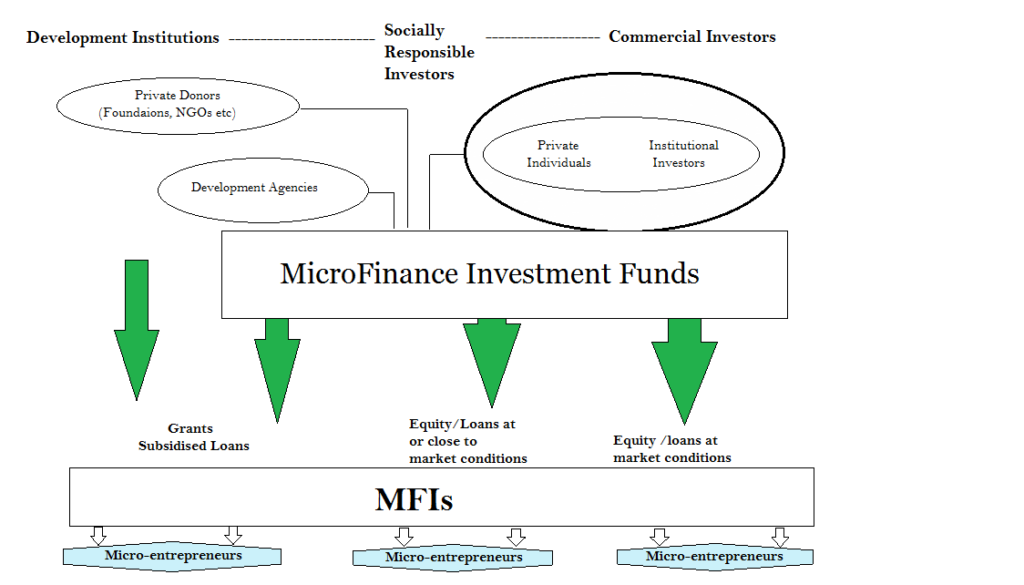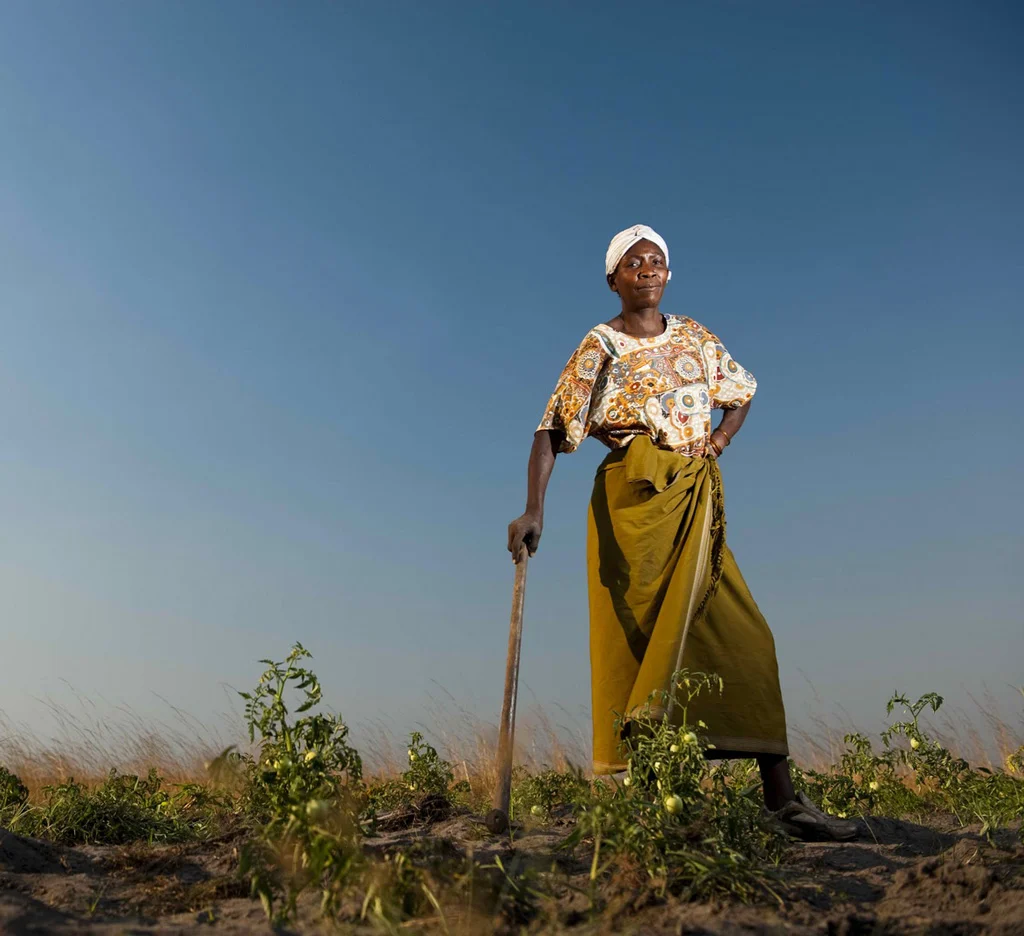
Evolution of the Micro Finance Industry
Market and Lending Methodology
With the globalisation of the industry came a shift from mainly focusing on rural areas, to also serving the urban dwellers. This ultimately led to a shift from using the group lending methodology that was common in rural areas, to individual lending as wealthier urban dwellers preferred individual loans.
Product Range
With regards to the product range, Micro Finance Institutions (MFIs) initially offered only micro credit: small loans offered at low interest rates. However, there has been diversification into more products such as micro insurance, savings accounts, and money transfers. According to Micro-finance experts interviewed by ‘responsAbility’, below are the top trends in Micro-finance likely to affect the product range offered in the micro-finance industry.
Micro-finance Suppliers
Initially, Micro-finance was mainly provided by non-profit NGOs that were supported through donations, grants and subsidies. This too has evolved, some of these non-profit NGOs have up scaled to banks or non-bank financial institutions. Additionally, some commercial banks have downscaled their activities by creating a Micro-finance department in order to tap into the market that is looking so promising.
Funding Landscape of MFIs
Currently, MFI activities are financed by a mix of donor funds, equity capital, deposits and borrowing. MFI funds are either channelled directly to the MFIs or through specialised funds called Micro Finance Investment Vehicles.

MFI International Financing
Foreign or international funding plays a major role in the industry and has increased since 2005. Foreign ownership has influenced the governance and performance of mainstream banks and other organisations. Since foreign commercial funding is relatively new to the Micro-finance industry, an insight into how this direction would affect the operation and performance of MFIs is imperative.
Impact of International Shareholders
Given that local sources of funding in Africa are inadequate due to the underdeveloped capital markets, international shareholders provide access to the extra funds needed by the MFIs. They also bridge the knowledge gap in the industry by bringing on board better governance mechanisms such as board independence and the use of external audit firms which could improve the operational efficiency of MFIs.
However, this could come at a significant cost to the MFIs. In order to statistically test the impact of international shareholders on MFIs’ cost structure, a model was developed, and the parameters tested for statistical significance using data from the Mersland database.
The Mersland database is generated from risk assessment reports prepared by five micro-finance rating agencies i.e. MicroRate, Microfinanza, Planet Rating, Crisil and M-Cril, and that contains data on 148 Microfinance Institutions in 51 countries globally with 47 MFIs coming from 14 African countries. Of the 47 African MFIs, 22 have international shareholders.
In the model, cost-to-income and operating cost-to-assets ratios were used to proxy efficiency and operating cost respectively. Additionally, controls for both firm specific and country specific effects were included. Firm specific controls include:
-
- Age of the MFI,
- Size – represented as the total assets of the firm,
- Portfolio at Risk with 30 days in arrears and,
- Debt to Equity ratio of the firm.
The country specific controls include:
-
- GDP per capita at purchasing power parity,
- GDP growth, inflation, current account balance and,
- Heritage index of the country.
Two multi-linear models were adopted:
-
- Cost-to-income = function (International shareholder (dummy variable), country specific and firm specific variables).
- Operating expense-to-assets = function (International shareholder, country specific and firm specific variables).
Results from this study show that international shareholders have statistically significant adverse effects on the efficiency of MFIs. This implies that MFIs with international shareholders generate their income at a higher cost. Such high-cost profiles could emanate from several factors. A possible explanation could be the high governance related cost. It is the case that having an international shareholder is highly correlated with having an international director and international CEO, who are more likely to receive high remuneration. Furthermore, in micro-finance literature it has been found that international directorship does not enhance financial performance in most cases. The ill effect of liability of foreignness could be a possible explanation for the inefficiencies as this brings on board a costly culture.
“…MFIs with international shareholders generate their income at a higher cost.”
Additionally, international funders in most cases take on the services of special external audit firms. And it is usually the case that different groups of investors demand independent audits according to their own terms of reference and funding agreements. This is costly as MFIs then have to deal with multiple audits during the year which may re-channel efforts to such audits rather than dealing with reaching appropriate social and financial performance.
Another possible reason for such cost profiles could be that some international equity funds are mainly made up of contributions from socially responsible investors with altruistic motives who are simply willing to serve the poorest populations. This usually comes with higher costs of operation associated with smaller loan amounts and their recovery.
Financing Tomorrows MFI
In the very long run, micro-finance will most likely be integrated into local financial markets and will mostly be funded by local savings accumulated from deposits. With the increasing commercialisation of the industry, many MFIs are up scaling into deposit taking institutions which implies that such MFIs will be able to tap deeper into the local markets to finance their activities. This, however, calls for a stricter regulation of the industry as a whole in order to protect consumers.
In addition to the deposits, MFIs will continue to seek cross border funding in terms of donations, debt and equity financing as local sources are usually not sufficient enough to meet the ever-increasing demand for finance by the world’s unbanked population. We observe an increasing interest in Micro-finance from so-called social investors and this trend is likely to carry on for a considerable amount of time. However, it is difficult for them to find strong MFIs in which they can invest their money because even though they call themselves “social”, they are still not willing to take on a lot of risk.
Conclusion
With commercialisation comes complexity in the operations of the MFIs. This calls for MFIs to reinforce their ownership structures with people who have a deep expert understanding of the industry and to also strengthen their relationships with institutional investors who will provide a consistent and size-able supply of capital and more globally accepted governance practices. Additionally, the future of sustained growth in the industry partly lies in adopting meaningful technologies to assist MFIs increase the efficiency and outreach of their operations.





